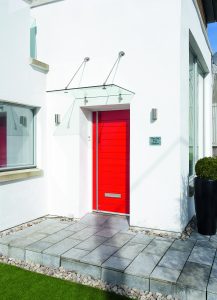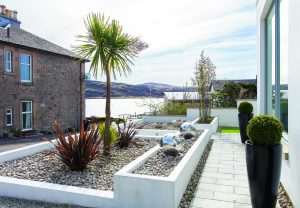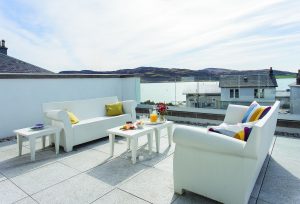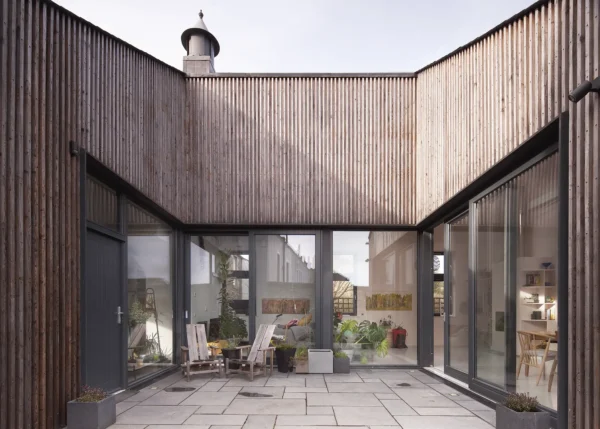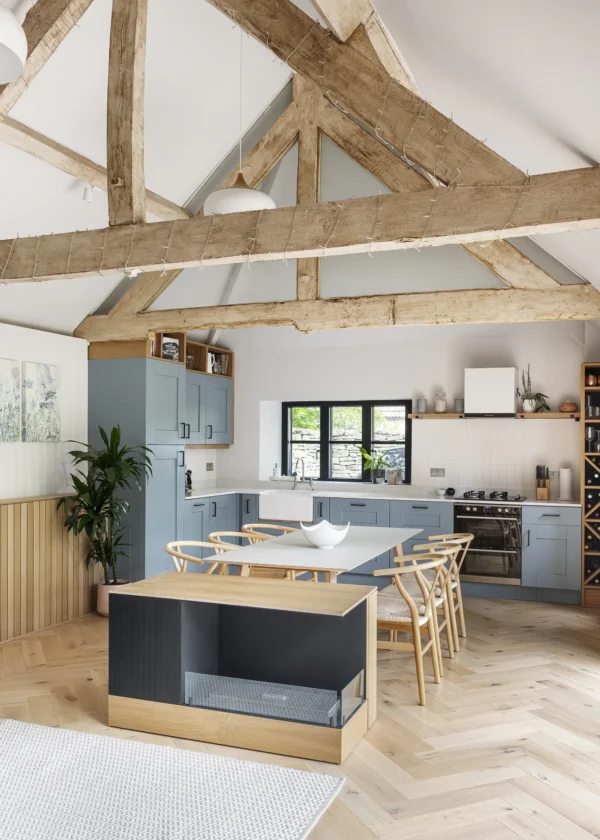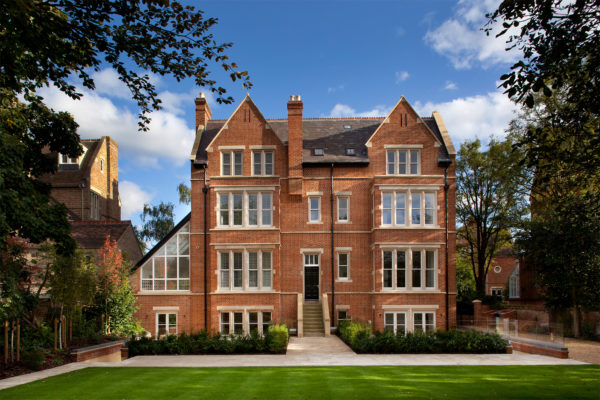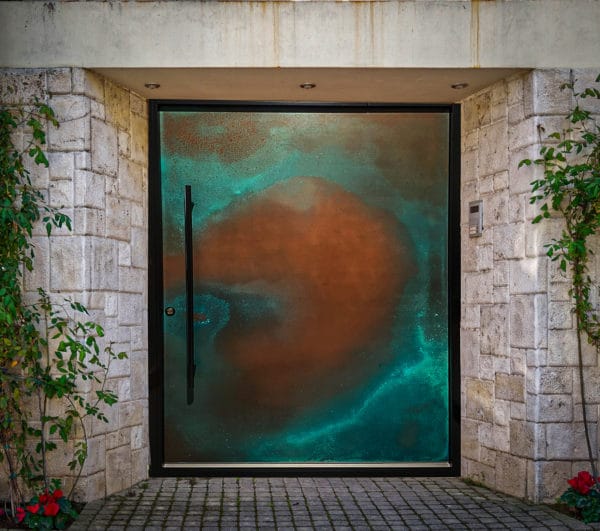Converted Fire Station with Stunning Views
Mark Brunjes and his wife Rhonda had been bringing their family to the small village of Tighnabruaich to enjoy daytrips and holidays for many years. Situated on the spectacular Cowal Peninsula an hour and a half west from Glasgow, the picturesque location boasts a panoramic coastal outlook – the perfect backdrop for relaxation.
“We’d come for sailing, golf, tennis, beach days and walking; we just love it,” says Mark. “The locals are so friendly and it is a very peaceful area – you can really unscramble your brain.”
Built in 1964, the village’s old fire station had been lying empty for a couple of months following the creation of a new facility in nearby Kames. The ‘for sale’ sign instantly caught the attention of Mark, who put an offer in straight away. It was the perfect size for a small family home and enjoys a great position in the centre of the small settlement.
- NamesMark & Rhonda Brunjes
- LocationTighnabruaich, Argyll & Bute
- ProjectConversion
- StyleContemporary
- Construction methodConcrete support with steel frame
- Plot cost£62,000
- House size300m²
- Build cost£240,000
- Total cost£302,000
- Project cost per m²£2,000
- Construction timeThree years
- Current value£400,000
Plus, it benefits from stunning views towards the south, overlooking the water; it just stirred everyone’s imagination,” says Mark, who was keen to try his hand at an ambitious building project. However, luck was not on his side, as he didn’t secure the property. “The agents had 85 enquiries and there were about 30 viewings; I’m certain that everyone who went to see it would have put an offer in,” he adds.
A few months later Mark received a call from the seller’s solicitors. It transpired that his bid was the second highest and, as the initial one had fallen through, he now had the opportunity to go ahead with the sale. The purchase was soon finalised, meaning the hard work could begin.
Action plan
The original structure was divided into two sections: a garage on one half (to keep the fire engine); with offices and a storage area on the other. Mark’s plan was to reinforce the roof and add an extra floor to house an open-plan living space, with a roof terrace above the old fire engine port.
Armed with a scale model of his design, Mark approached the planning department to get a feel for whether his scheme would be accepted. Thankfully, their reaction was very positive, so he immediately got to work employing an architect friend to create the detailed drawings. He also engaged a structural engineer and a quantity surveyor. Once the proposal was submitted it took just three months to gain consent.
Mark then put the project out to tender, but he was shocked at the expensive quotes he got back from builders. “I was surprised at how high they came in at. Looking back, I expect they knew all too well how costly it was to deliver skips, scaffolding and steel frames to a remote, rural location such as this,” he says.
As an interior designer, Mark had years of experience working on hotel, bar and restaurant schemes that needed to be completed to a tight schedule and budget. Backed by this, he decided to take on the role of project manager. However, doing a job for himself on an isolated site in his spare time was not as straightforward as one of his commercial ventures. Although he took on this responsibility to save some pennies, his planned spend of £150,000 soon increased.
Extra costs & complications
As with any major building work, this conversion was not without its challenges. A temporary roof was constructed to allow the existing covering to be removed and to protect the new concrete pad foundations (which support the steel frame) and building works from the elements.
The structure also required scaffolding, which was twice the height of the property. These stayed in place for one and a half years and were major expenses that – although critical to the project’s success – aren’t even visible in the end result.
Mark took a hands-on approach to his role as project manager, filling skips, procuring the materials and hiring the labour. “There were a few quibbles,” he says. “These were mainly because of small things, such as the fact that some of the downlighters had been positioned in the wrong place.”
Expectations vs reality
However, there was one hitch that caused big problems: when the steel frame was delivered, it turned out not to be the size that Mark had ordered. “This meant I had to adjust the design once it was in place. It was very stressful, especially as the manufacturer didn’t accept responsibility. All adjustments were done at my own cost – time, labour and materials,” he says.
After a long three years, the property was finally completed in 2015. “In hindsight, my original timescale and budget were unrealistic,” says Mark. “The problem was that I didn’t want to compromise on the property’s quality and finish; so the fact that I had no deadline meant that there was very little urgency to get the job done within a certain timeframe. All in all it took a lot longer than it needed to.”
Finally there
Mark had dreamt of a modernist, clean lined interior, which remained true to its 1960s heritage. As a keen art collector, he wanted the house to have the feel of a gallery, so white walls were the obvious solution. The building has a Mediterranean vibe, along with a touch of Miami – which is fitting as it is first and foremost a holiday home.
“We use it as a base for our favourite outdoor activities,” he says. Details in the decor are influenced by the house’s surroundings, from the plaid upholstered sofa, which gives a subtle hint to the house’s Scottish positioning, to the soft olive greens and rust hues, which act as homage to the colours of the hills in the distance.
An upside-down floorplan sees the bedrooms and bathrooms situated on the ground floor. This is due to the fact that these zones are fairly dark and viewless compared with the upstairs. The open-plan space on the first floor is flooded with natural sunlight thanks to expansive glazing that spans the entire south-facing wall. The sociable spot encompasses the living zone, kitchen and dining area, which opens out onto a generously sized south-facing terrace.
The finished property boasts some excellent energy efficiency measures, too. The combination of good insulation, a Greenstar Heatslave boiler by Worcester, Bosch Group and a woodburning stove all work to create a space that’s economical to warm in winter and easy to keep cool in the summer months.
“It’s a great party house,” says Rhonda. “We’ve installed a Sonos sound system into the ceilings and you can select different tunes for separate rooms, all controlled remotely. It’s lovely to be able to throw the doors open on a summer’s evening and enjoy the view along with music – our kids and their friends love it. Mark has also designed a beautiful lighting setup for the terrace, which looks gorgeous at night.”
All in all, the Brunjeses have achieved a contemporary seaside home, which benefits from impressive vistas and a chilled atmosphere with the sense of Ibiza overtones – the perfect retreat.
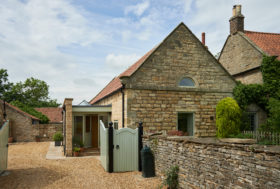








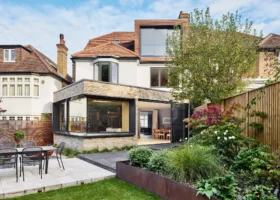
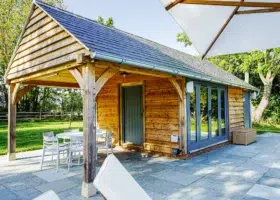







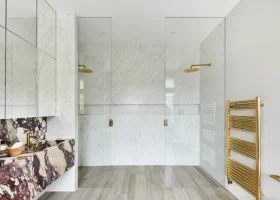
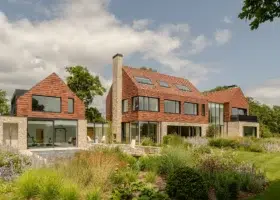





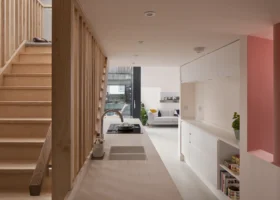








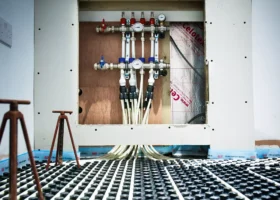




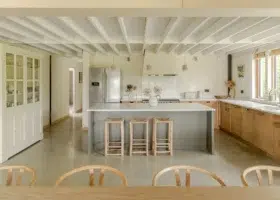






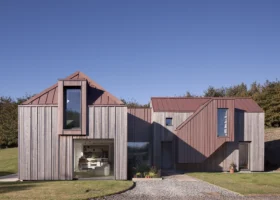

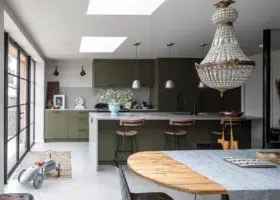
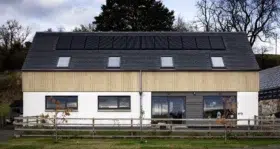


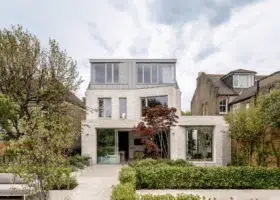
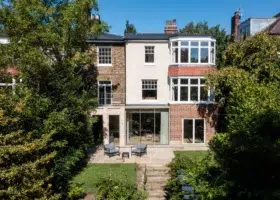






























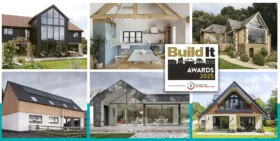






 Login/register to save Article for later
Login/register to save Article for later




